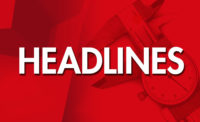About twenty years ago I was asked to make a presentation on calibration to a meeting of a local chapter of the National Conference of Standards Laboratories. There were a lot of newcomers to the industry at the time, some of whom were essentially kidding themselves regarding their abilities and too many trying to do the same thing to potential customers.
After an hour reciting a range of scams and errors that prevailed, the moderator asked if anyone had any questions. There were none, of course, as I had probably insulted over half of those in attendance.
Recently, I came across my notes for that presentation and began wondering how much has changed in the calibration field since then. My conclusion? Not a lot. The persistent problems have become the subject of my rants on these pages as regular readers will attest, but now, instead of them being from the experience of my colleagues and I alone, a recent study shows all types of laboratories are feeling the pain as well. Part two of this rant will deal with the study, but in the meantime, here’s a reminder of some of the issues.
The number of quality standards dealing with gage and instrument calibration has not declined appreciably over the years. What started out as one size fitting all has been revised over the years but too many sectors feel the need to have their own version with industry specific requirements. Some of these requirements are of doubtful benefit and are merely holdovers from previous documents that have been incorporated into ‘industry specific’ versions being promoted today.
The number of accrediting agencies seems to have settled down to a few well-known organizations compared to the past when there was actually an outfit that offered a mail-in service so labs seeking accreditation could forgo the time and expense of an on-site audit. All you had to do was send in your quality manual along with some forms and your payment and you were pretty much good to go.
Like all large organizations, accrediting agencies have let ‘requirement creep’ take over based on their interpretation of the standards’ involved which has increased operating costs and complications for accredited labs.
The staggering growth in the use of computers has too many people believing that computers think so they look to replace humans with machines wherever possible to reduce costs.
Users of outside calibration services are requiring more information on reports even though many have trouble dealing with the basic data usually provided. And far too many expect outside calibration labs to make decisions on their behalf when the person—or software—making such decisions rarely has adequate specifications to do so or knows enough about the application to be very precise. Of course, no one wants to pay more for such add-ons.
That study I mentioned earlier should be a ‘must read’ for anyone involved in laboratory work. It was a technical market study put together by The Consulting Group at Virginia Tech under the guidance of Project Manager Rachel Trebour. Q
This is part one of a two-part series.



